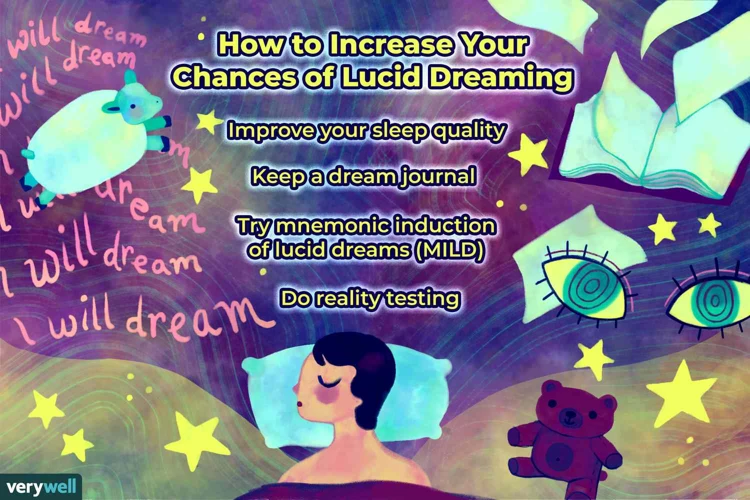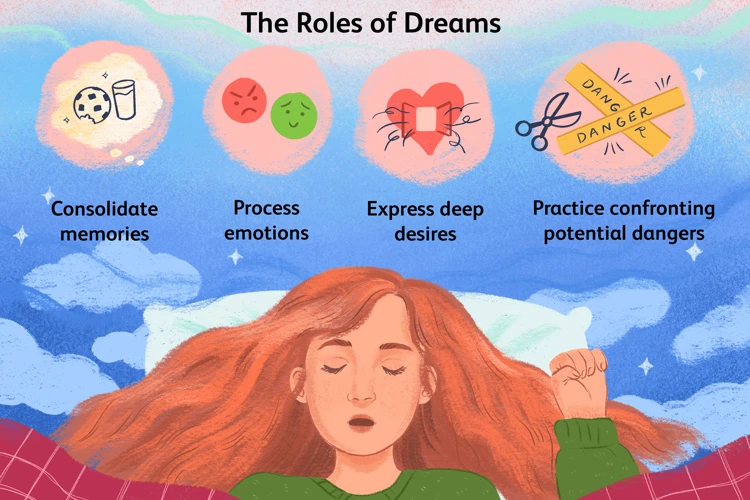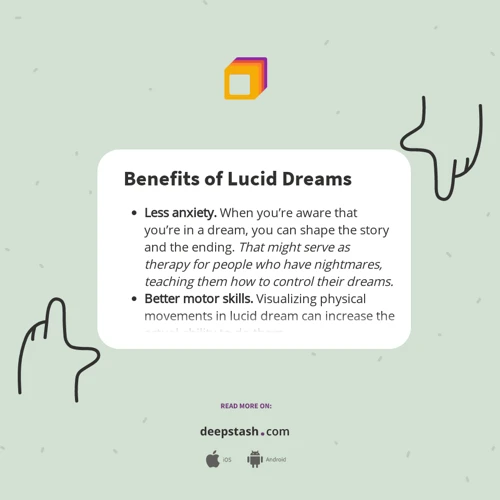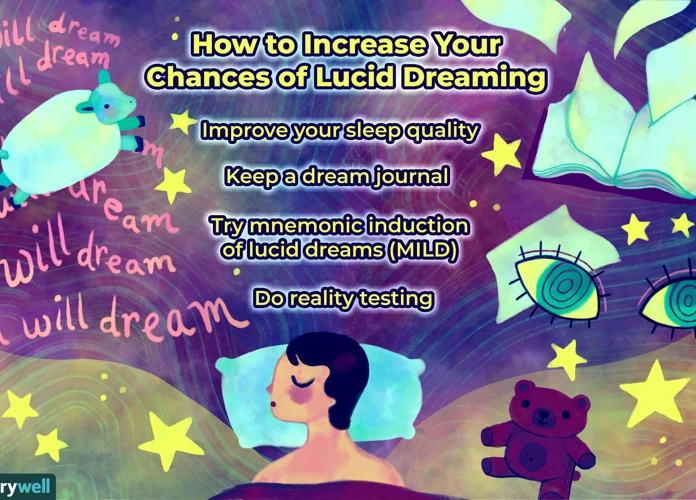Throughout history, dreams have fascinated and perplexed mankind. Lucid dreaming, a phenomenon in which individuals become aware that they are dreaming and can exert control over their dreams, has captivated the imagination of both scientists and artists alike. But beyond mere fascination, there is evidence to suggest that lucid dreaming holds therapeutic potential. This article explores the connection between lucid dreaming and therapy, unveiling the myriad benefits that this practice can offer. By understanding the characteristics and science behind lucid dreaming and delving into its therapeutic applications, we can unlock the power of dreams and tap into the profound healing and transformative effects they can have on our emotional well-being. So, let us embark on this journey into the world of lucid dreaming as a therapeutic practice, and discover the potential it holds for personal growth and healing.
What is Lucid Dreaming?

Lucid dreaming is a remarkable state of consciousness where individuals become aware that they are dreaming while they are still in the dream. This awareness provides them with the ability to actively participate in and manipulate the dream environment. In a lucid dream, people can control their actions, alter the dream narrative, and even change the dream scenery at will. This unique experience of being conscious within the dream world opens up a whole new realm of possibilities for self-discovery, personal growth, and therapeutic exploration. Lucid dreaming allows individuals to tap into their subconscious mind, navigate through their deepest desires and fears, and gain insights that can lead to profound transformation. It provides a gateway to a vivid and immersive dream experience, where the boundaries between reality and imagination blur and anything becomes possible. To understand lucid dreaming fully, it is essential to grasp its fundamental characteristics and explore its science, which sheds light on the fascinating mechanism behind this intriguing phenomenon. (link: /the-science-of-lucid-dreaming/)
The Link between Dreams and Therapy

The link between dreams and therapy has been recognized for centuries, with cultures around the world placing importance on dream analysis and interpretation. Dreams have long been seen as a reflection of our subconscious thoughts, emotions, and desires. They offer a unique window into our inner world, presenting us with symbols, metaphors, and narratives that can provide valuable insights into our mental and emotional states. By exploring and understanding our dreams, we can gain a deeper understanding of ourselves and the challenges we face. Dreams have the power to bring buried memories, unresolved emotions, and hidden traumas to the surface, allowing us to confront and process them in a safe and controlled environment. Incorporating dreams into therapy can offer a powerful therapeutic tool, enabling individuals to access their subconscious mind and work through deep-seated issues. Lucid dreaming, in particular, amplifies this potential by providing individuals with a heightened level of awareness and control within the dream state. The ability to navigate and interact with dreams consciously opens up a myriad of possibilities for therapeutic exploration and growth. It allows individuals to confront fears, resolve conflicts, and develop new insights and perspectives on their challenges. The link between dreams and therapy is a powerful one, offering a unique pathway to healing, self-discovery, and personal transformation. (link: /harnessing-lucid-dreaming-self-discovery-growth/)
1. The Power of Dreams
Dreams have long held a mystical allure, captivating us with their enigmatic nature. They possess a unique power to tap into our unconscious thoughts, emotions, and experiences. Dreams can serve as a mirror to our innermost desires, fears, and conflicts, offering a glimpse into our subconscious mind. Through dreams, we can explore and process unresolved emotions, traumas, and memories that may be inaccessible in our waking state. This therapeutic potential of dreams lies in their ability to bypass conscious defenses and provide a safe and symbolic space for exploration and healing. Dreams can offer valuable insights, guiding us towards personal growth and self-discovery. By analyzing and interpreting dream symbolism and patterns, we can gain a deeper understanding of ourselves, our relationships, and our goals. The power of dreams lies in their capacity to illuminate the hidden aspects of our psyche and navigate the complexities of our inner world. And when combined with the conscious awareness and control of lucid dreaming, this power can be magnified, leading to transformative experiences and enhanced psychological well-being. (link: /benefits-lucid-dreaming-mental-health/)
2. Exploring Different Therapeutic Approaches
When it comes to exploring different therapeutic approaches utilizing lucid dreaming, there are several methods and techniques that have been developed. One such approach is known as Dream-Initiated Lucid Dreaming (DILD). In this method, individuals focus on increasing their dream recall and awareness through techniques such as keeping dream journals, reality checks, and setting intention before sleep. By engaging with their dreams in a more conscious and intentional manner, individuals can increase their chances of becoming lucid within the dream state.
Another approach is Wake-Initiated Lucid Dreaming (WILD), which involves transitioning directly from a waking state into a lucid dream without losing consciousness. This technique requires deep relaxation, mindfulness, and the ability to maintain awareness as the body falls asleep while the mind remains awake. Though more challenging to master, WILD can lead to highly vivid and immersive lucid dream experiences.
There are therapeutic practices that involve working with lucid dreams in a specifically tailored manner. For example, imagery rehearsal therapy (IRT) utilizes lucid dreaming as a means to rewrite and transform one’s dream content to reduce the recurrence of nightmares and alleviate the associated distress. By rehearsing positive outcomes within lucid dreams, individuals can effectively change the narrative of their nightmares and generate more positive dream experiences.
Other therapeutic approaches, such as Gestalt-based dreamwork and Jungian dream analysis, incorporate lucid dreaming as a tool for deep exploration of the unconscious mind and the integration of dream symbolism into personal growth and healing. These approaches utilize the rich symbolism and archetypal imagery present in dreams, including lucid dreams, to gain insights into one’s psyche and address emotional, psychological, and spiritual aspects of well-being.
Incorporating these various therapeutic approaches into the practice of lucid dreaming can enhance the therapeutic potential and make it a valuable tool for self-discovery, personal growth, and healing. By understanding and experimenting with these different approaches, individuals can tailor their lucid dreaming practice to align with their specific therapeutic goals and embark on a profound journey of self-exploration and transformation.
Understanding Lucid Dreaming

Understanding lucid dreaming is essential to fully grasp the potential it holds as a therapeutic practice. Let’s delve into the key aspects of lucid dreaming:
1. Definition and Characteristics:
Lucid dreaming is a state of consciousness where individuals are aware that they are dreaming while they are still in the dream. This awareness grants them the ability to actively participate in and manipulate the dream environment. Key characteristics of lucid dreaming include vividness, realism, and a sense of control within the dream.
2. The Science behind Lucid Dreaming:
The science of lucid dreaming explores the neural mechanisms that enable this unique experience. Research suggests that lucid dreaming occurs during Rapid Eye Movement (REM) sleep, a stage of sleep associated with vivid dreams. During REM sleep, specific regions of the brain, such as the prefrontal cortex, show increased activity, allowing for self-reflective awareness and cognitive functioning within dreams.
3. Techniques and Practices:
Various techniques can be employed to cultivate lucid dreaming. These include reality checks, such as looking for incongruencies in the dream environment, keeping a dream journal to improve dream recall and awareness, and practicing mindfulness both in waking life and within dreams.
4. Benefits of Lucid Dreaming:
Lucid dreaming offers a range of benefits beyond its therapeutic potential. It can serve as a source of inspiration for artists and writers, provide opportunities for self-exploration and personal growth, and allow individuals to engage in enjoyable and adventurous experiences within the dream world.
Understanding the definition, characteristics, science, and techniques of lucid dreaming provides a solid foundation for exploring its potential as a therapeutic tool. By comprehending these fundamental aspects, individuals can embark on a journey of self-discovery and unleash the transformative power of lucid dreaming.
1. Definition and Characteristics
To truly understand lucid dreaming, it is important to delve into its definition and characteristics. Lucid dreaming can be defined as a state of consciousness in which the dreamer is aware that they are dreaming while the dream is unfolding. This heightened awareness brings a sense of clarity and control within the dream, allowing the dreamer to actively engage with and manipulate the dream environment.
One key characteristic of lucid dreaming is the realization that the dream world is not bound by the same rules as the waking world. In dreams, ordinary physical limitations can be transcended, and the dreamer has the ability to fly, breathe underwater, or perform incredible feats that defy the laws of reality. This freedom to bend and shape the dream reality is one of the most exciting aspects of lucid dreaming.
Another characteristic of lucid dreams is their vividness and sensory richness. Lucid dreams are often described as having a heightened level of detail, color, and intensity compared to regular dreams. The dream scenes can be incredibly lifelike, engaging all the senses and creating an immersive experience that feels as real as waking life.
Additionally, lucid dreams offer a unique sense of self-awareness. The dreamer is not just a passive observer but an active participant in the dream narrative. They can make conscious decisions, engage in conversations, and interact with dream characters, all while being conscious of the fact that they are in a dream state.
It is important to note that lucid dreaming can vary in intensity and frequency from person to person. Some individuals may have spontaneous lucid dreams without any intentional effort, while others may need to practice specific techniques to induce and maintain lucidity. Nevertheless, lucid dreaming holds immense potential for personal growth, self-exploration, and therapeutic benefits. By harnessing the power of lucid dreaming, individuals can unlock the vast potential of their subconscious mind and embark on a journey of self-discovery and transformation.
2. The Science behind Lucid Dreaming
The science behind lucid dreaming reveals fascinating insights into the neurological and physiological processes that occur during this unique state of consciousness. Research has shown that lucid dreaming primarily involves activation of the prefrontal cortex, the part of the brain associated with self-awareness and decision-making. This area of the brain is responsible for higher cognitive functions, such as rational thinking, problem-solving, and working memory. During a lucid dream, the prefrontal cortex becomes more active, allowing individuals to realize that they are dreaming and enabling them to exercise control over their dream experiences. Additionally, studies using neuroimaging techniques have demonstrated that certain brain regions, such as the parietal cortex and the anterior cingulate cortex, play a role in differentiating between waking and dreaming states. Understanding the neurobiological basis of lucid dreaming not only enhances our knowledge of the phenomenon but also opens up possibilities for future research and potential therapeutic applications. By unraveling the science behind lucid dreaming, we gain a deeper appreciation for the incredible capabilities of our own minds and the untapped potential that lies within.
The Therapeutic Benefits of Lucid Dreaming

The therapeutic benefits of lucid dreaming are vast and profound. (strong) This practice has been found to facilitate emotional and psychological healing, offering individuals an opportunity to process and resolve unresolved issues from their waking lives within the safe and controlled environment of their dreams. Lucid dreaming can be particularly effective in overcoming phobias and traumas, as individuals can confront and engage with their fears in a controlled and supportive manner, allowing for gradual desensitization and emotional release. Additionally, lucid dreaming enhances creativity and problem-solving abilities by providing a platform for unfettered exploration and experimentation. Through lucid dreams, individuals can access their subconscious mind and tap into hidden insights and innovative ideas. Lucid dreaming enables individuals to explore and resolve inner conflicts, gaining a deeper understanding of themselves and their relationships. By immersing themselves in the dream world, individuals can gain valuable insights and perspectives that can aid in personal growth and self-discovery. The therapeutic benefits of lucid dreaming are multifaceted and can have a positive impact on emotional well-being, personal development, and overall mental health. (strong) To fully harness these benefits, it is essential to understand the techniques and practices involved in cultivating lucid dreams, as well as how to integrate them into therapeutic settings and self-help endeavors.
1. Emotional and Psychological Healing
Emotional and psychological healing is one of the key therapeutic benefits of lucid dreaming. When individuals enter the lucid dream state, they can engage with their emotions and experiences on a profound level. They have the opportunity to confront and process unresolved emotional issues, trauma, or grief that may be affecting their well-being. In a lucid dream, people can revisit past memories, interact with dream characters that represent aspects of themselves, and even symbolically work through difficult emotions and conflicts. This cathartic process allows individuals to gain insight, release pent-up emotions, and find closure, ultimately leading to emotional healing.
Lucid dreaming provides a safe and controlled environment where individuals can confront fears, anxieties, and phobias in a controlled manner. They can deliberately place themselves in challenging dream scenarios and confront those fears head-on, gradually desensitizing themselves to the triggering stimuli. This exposure therapy within the lucid dream state can have a profound impact on overcoming fears and phobias in the waking world. Additionally, lucid dreaming offers a unique opportunity for individuals to explore and cultivate positive emotions such as joy, love, and gratitude. They can create and immerse themselves in uplifting dream experiences, allowing them to tap into a deep well of positive emotions that can have a lasting impact on their mental and emotional well-being.
Lucid dreaming serves as a powerful tool for emotional and psychological healing. It allows individuals to confront and process unresolved emotions, traumas, and fears, leading to healing and growth. By actively participating in the dream state and consciously engaging with their emotions, individuals unlock the potential for deep emotional exploration and transformation. Whether it’s releasing pent-up emotions, overcoming fears, or cultivating positive emotions, lucid dreaming offers a unique and therapeutic avenue for emotional healing and well-being.
2. Overcoming Phobias and Traumas
Overcoming phobias and traumas is another powerful therapeutic application of lucid dreaming. When individuals experience phobias or traumas, their subconscious mind often stores deep-rooted fears and anxieties associated with specific situations or triggers. Lucid dreaming provides a safe and controlled environment to confront these fears head-on and gradually diminish their impact. Within a lucid dream, individuals can intentionally expose themselves to their phobias or reenact traumatic experiences, but with the knowledge that they are in a dream state and are ultimately safe. This allows them to confront their fears in a controlled manner, gradually reducing the emotional intensity associated with those experiences over time. By repeatedly confronting and reinterpreting these fears within lucid dreams, individuals can desensitize themselves to the trigger and ultimately overcome their phobias or traumas. This therapeutic approach harnesses the power of the subconscious mind to reframe and heal deep-seated emotional wounds. Through lucid dreaming, individuals can rewrite the narrative of their past traumas, empowering themselves to move forward with renewed resilience and emotional well-being.
3. Enhancing Creativity and Problem Solving
Enhancing creativity and problem-solving is another therapeutic benefit of lucid dreaming. When in a lucid dream, individuals have the unique opportunity to tap into their subconscious mind, which can lead to enhanced creativity and innovative thinking. In a lucid dream, the dreamer can explore different scenarios, experiment with ideas, and think outside of the box without limitations. This free-flowing, unrestricted environment allows for the exploration of new concepts, perspectives, and solutions to problems. Through lucid dreaming, individuals can gain insights and inspiration that subconsciously translate into their waking life, where they can be applied to artistic endeavors, professional challenges, or personal dilemmas. Lucid dreaming can unlock the creative potential within us, helping us overcome mental blocks, stimulate imagination, and foster a more innovative approach to problem-solving. It offers a playground for idea generation and experimentation, providing a safe space to explore unconventional or unconventional solutions without the constraints of reality. (link: /harnessing-lucid-dreaming-self-discovery-growth/)
4. Exploring and Resolving Inner Conflicts
Exploring and resolving inner conflicts is a powerful therapeutic benefit of lucid dreaming. When we enter the dream world with conscious awareness, we have the opportunity to confront and address unresolved emotional or psychological issues that may be affecting our daily lives. Lucid dreaming provides a safe and controlled environment where we can delve into the depths of our subconscious mind and explore the root causes of inner conflicts without the limitations of the waking world. By actively engaging in the dream scenario, we can confront our fears, face our past traumas, and gain a profound understanding of our deepest emotions. Through lucid dreaming, we can engage in self-reflection, gain new perspectives, and experiment with different approaches to resolving these conflicts. We can experience healing and transformation as we work towards integrating and resolving these inner conflicts, leading to a greater sense of peace, wholeness, and personal growth. Lucid dreaming offers a unique and empowering tool for exploring and resolving these inner conflicts, allowing us to tap into the immense potential of our subconscious mind to facilitate our emotional and psychological healing.
How to Cultivate Lucid Dreaming

How to Cultivate Lucid Dreaming:
1. Keeping a Dream Journal: A crucial step in cultivating lucid dreaming is to keep a dream journal. Upon waking up, immediately jot down any details, emotions, or images from your dream. This practice helps improve dream recall and allows you to identify recurring dream signs or themes, which can serve as triggers for lucidity. By consistently recording your dreams, you create a stronger connection and awareness of your dream world.
2. Reality Checks and Mindfulness: Incorporating reality checks into your daily routine can enhance your chances of experiencing lucid dreams. These reality checks involve questioning the nature of reality throughout the day, which can carry over into your dreams. Examples of reality checks include looking at a clock or text, questioning if you are dreaming, and attempting to push your finger through your opposite palm. If these checks fail during waking hours, you can train your mind to perform them in dreams, triggering lucidity. Practicing mindfulness during the day also helps improve overall awareness, which can carry over into the dream state.
3. Lucid Dreaming Techniques and Practices: Various techniques can be employed to induce and prolong lucid dreams. One popular method is reality testing, where you perform reality checks within a dream to verify if you are dreaming or not. Another technique is called WILD (Wake-Initiated Lucid Dreaming), where you transition directly from a waking state to a lucid dream while maintaining awareness. Mnemonic induction of lucid dreams (MILD) involves setting the intention to have a lucid dream as you fall asleep, and repeating affirmations like “I will have a lucid dream tonight.” Other practices, such as wake-back-to-bed (WBTB) and using lucid dreaming supplements, can also be effective in increasing the likelihood of lucid dreaming.
By incorporating these practices into your routine, you can cultivate the skill of lucid dreaming and increase your ability to become aware and in control within your dream world. It may take time and patience, but with dedication and practice, you can unlock the door to the extraordinary realm of lucid dreaming.
1. Keeping a Dream Journal
Keeping a dream journal is an essential step in cultivating lucid dreaming abilities. A dream journal is exactly what it sounds like – a journal where individuals record their dreams in detail. By consistently writing down dreams upon waking, individuals train their brain to pay closer attention to dreams and improve dream recall. This practice helps create a stronger connection between waking life and the dream world. When maintaining a dream journal, it is crucial to jot down every vivid detail, including people, places, emotions, and sensory experiences. The more detailed the entries, the better. Additionally, individuals can use keywords or tags to categorize dreams, making it easier to identify recurring patterns or themes. Reflecting on the dream journal entries can bring about greater self-awareness and enhance the ability to recognize the dream state while dreaming, ultimately leading to lucidity. Keeping a dream journal acts as a bridge between the conscious mind and the subconscious, providing valuable insights into one’s inner thoughts and emotions.
2. Reality Checks and Mindfulness
Reality checks and mindfulness techniques are essential practices for cultivating lucid dreaming. Reality checks involve regularly questioning one’s reality throughout the day to increase the likelihood of this habit translating into dreams. These checks can involve simple actions such as looking at one’s hands and counting fingers, attempting to push a finger through the palm of the hand, or trying to read a piece of text multiple times to observe if it changes. By performing these reality checks consistently, individuals train their minds to question the nature of their environment, making it more likely for them to recognize the dream state when it occurs. Mindfulness, on the other hand, involves cultivating a present moment awareness and a nonjudgmental attitude toward one’s thoughts, emotions, and sensations. By practicing mindfulness during the day, individuals develop a heightened level of self-awareness that can carry over into their dreams. This increased awareness can facilitate the recognition of dream signs and inconsistencies, triggering lucidity within the dream. Combining reality checks with mindfulness creates a powerful synergy, as individuals become more attuned to their waking reality while simultaneously developing the introspective skills needed for lucid dreaming. These practices serve as important tools for increasing lucid dream frequency and enhancing one’s ability to consciously navigate the dream world.
3. Lucid Dreaming Techniques and Practices
There are numerous techniques and practices that can be employed to cultivate and enhance lucid dreaming experiences. These methods serve as tools to increase dream self-awareness and promote the ability to recognize and control dreams. Here are some popular techniques for lucid dreaming:
1. Reality Checks: Incorporating reality checks into your daily routine is a common technique used to trigger lucidity in dreams. This involves performing actions or asking questions throughout the day to check if you are awake or dreaming. For example, you can question your surroundings, read text, or try to push your finger through your palm. By regularly performing these reality checks, you train your mind to question the reality of your current state, including within dreams.
2. Mnemonic Induction of Lucid Dreams (MILD): MILD technique involves setting intentions before sleep to become aware and lucid in your dreams. Before falling asleep, you repeat a specific phrase or affirmation such as, “I will recognize that I am dreaming.” By priming your mind with this intention, you increase the chances of becoming aware within your dreams.
3. Wake-Back-to-Bed (WBTB): With the WBTB technique, you set an alarm to wake up after a few hours of sleep. During the waking period, engage in activities that promote wakefulness like reading about lucid dreaming or writing down dream recall. Then, go back to sleep with the intention of entering a lucid dream. This technique takes advantage of the increased likelihood of entering a dream state during the REM (rapid eye movement) phase.
4. Visualization and Meditation: Incorporating visualization exercises and meditation into your bedtime routine can enhance your ability to have lucid dreams. Visualization involves mentally rehearsing becoming aware and maintaining lucidity in dreams. Meditation helps improve focus and relaxation, which can contribute to increased dream awareness and control.
5. Lucid Dream Supplements: Certain supplements, such as Galantamine or Choline, have been reported to enhance the likelihood of having lucid dreams. However, it’s important to consult with a healthcare professional before trying any new supplements.
Remember, it may take time and practice to develop proficiency in lucid dreaming techniques. Experiment with different methods to find what works best for you. Maintaining a consistent dream journal, practicing reality checks, and combining techniques can further improve your chances of experiencing lucid dreams regularly. So, embrace the journey of exploring these lucid dreaming techniques and unlock the wonders of your dream world.
Combining Lucid Dreaming with Therapy
Combining lucid dreaming with therapy can be a powerful approach to enhance the therapeutic process and facilitate personal growth. There are two main ways in which lucid dreaming can be integrated into therapy: as a part of therapy sessions and as a self-help tool.
1. Integrating Lucid Dreams into Therapy Sessions:
– Therapists can guide clients in exploring their lucid dreams during therapy sessions. By discussing and analyzing the content and symbolism of lucid dreams, therapists can gain valuable insights into their clients’ subconscious thoughts, emotions, and experiences. This deeper understanding can help identify and address underlying issues, traumas, or conflicts more effectively.
– Lucid dreams can also be used as a platform for role-playing and practicing new behaviors or coping strategies. Clients can rehearse challenging situations or confront past traumas within the safe space of the dream world, allowing for gradual healing and desensitization.
– Techniques such as dream re-entry, where clients revisit and continue a lucid dream, can be employed to further explore unresolved emotions and work towards resolutions.
2. Lucid Dreaming as a Self-Help Tool:
– Individuals can learn and practice lucid dreaming techniques outside of therapy to gain personal insights and promote self-awareness. Keeping a dream journal, reality checks, and practicing mindfulness are effective methods for initiating and maintaining lucid dreams.
– Lucid dreaming can be utilized for self-exploration, addressing inner conflicts, and gaining clarity on personal goals and aspirations. By intentionally entering lucid dream states, individuals can engage with their subconscious mind and tap into their own wisdom and intuition.
– For individuals experiencing anxiety, phobias, or post-traumatic stress disorder, lucid dreaming can offer a safe space for exposure therapy. They have the opportunity to confront their fears and traumas in a controlled environment, gradually reducing the emotional impact and working towards resolution.
Combining lucid dreaming with therapy empowers individuals to harness the therapeutic potential of their dreams actively. Whether utilized in therapy sessions with professional guidance or as a self-help tool for personal growth, lucid dreaming provides a unique and transformative way to explore the depths of the unconscious mind and promote healing.
1. Integrating Lucid Dreams into Therapy Sessions
Integrating lucid dreams into therapy sessions can be a powerful tool for therapists to facilitate healing and personal growth. By incorporating lucid dreaming techniques, therapists can guide their clients to explore and actively engage with their dream experiences in a safe and controlled setting. This integration allows individuals to tap into their subconscious mind, access unresolved emotions or traumas, and work towards resolving them. During a therapy session, a therapist may encourage clients to recall and journal their dreams, paying close attention to recurring themes or symbols. By discussing these dreams, the therapist helps the client explore and gain insights into their subconscious thoughts and emotions. The therapist may guide clients in practicing lucid dreaming techniques, such as reality checks and visualization exercises, to enhance their ability to become lucid during dreams. This can provide a unique opportunity for individuals to confront their fears, practice new behaviors, and establish a sense of empowerment. Ultimately, integrating lucid dreams into therapy sessions allows for a deeper exploration of the subconscious mind and can lead to profound healing and personal transformation.
2. Lucid Dreaming as a Self-Help Tool
Lucid dreaming can be a powerful self-help tool for personal growth and transformation. When individuals embrace and harness lucid dreaming, they open the door to a world of unlimited possibilities and exploration of the self. One of the key benefits of lucid dreaming as a self-help tool is its ability to confront and overcome fears and anxieties. By actively participating in the dream world, individuals can confront phobias, traumas, and other emotional challenges in a safe and controlled environment. This allows for a gradual desensitization and reprocessing of these experiences, leading to emotional healing and empowerment. Lucid dreaming also facilitates the exploration of inner conflicts and unresolved issues. Through introspection and interaction with dream symbols and characters, individuals can gain insights into their subconscious mind and work towards resolving deep-seated psychological conflicts. Lucid dreaming enhances creativity and problem-solving skills. The dream world is a limitless canvas where individuals can engage in artistic expression, solve complex puzzles, and generate innovative ideas. The vivid and immersive nature of lucid dreams stimulates the creative centers of the brain, fostering a fertile ground for imagination and ingenuity. Lucid dreaming serves as a powerful self-help tool, enabling individuals to address emotional challenges, unlock their creative potential, and embark on a journey of self-discovery and personal growth.
Conclusion
In conclusion, lucid dreaming holds immense potential as a therapeutic practice. The power of dreams to heal, explore, and transform has been recognized for centuries. Lucid dreaming takes this power to a whole new level by allowing individuals to actively engage with their dreams and harness their creative and problem-solving abilities. Through lucid dreaming, we can tap into our subconscious mind, confront our fears, work through inner conflicts, and find emotional and psychological healing. Lucid dreaming can be a powerful tool in therapy, whether integrated into therapy sessions or used as a self-help practice. By keeping a dream journal, practicing reality checks and mindfulness, and utilizing specific lucid dreaming techniques, we can cultivate and enhance our lucid dreaming abilities. The combination of lucid dreaming and therapy offers a unique and effective approach to personal growth and healing. So, let us embrace the potential of lucid dreaming and embark on a journey of self-discovery, growth, and transformation.
Frequently Asked Questions
1. Can anyone learn to have lucid dreams?
Yes, virtually anyone can learn to have lucid dreams with practice and a few techniques. While some individuals may naturally experience lucid dreams more frequently, with dedication and perseverance, anyone can cultivate the skill of lucid dreaming.
2. Are there any potential dangers or risks associated with lucid dreaming?
No, lucid dreaming is generally considered safe and poses no specific dangers or risks. However, it is essential to approach lucid dreaming with a balanced mindset and practice self-care. If you experience any discomfort or anxiety during lucid dreams, it is advised to seek guidance from a professional.
3. Can lucid dreaming help with anxiety and stress?
Yes, lucid dreaming can be a useful tool for managing anxiety and stress. It provides an opportunity to consciously navigate and transform the dream environment, enabling individuals to confront and work through their fears, anxieties, and stressors in a safe and controlled setting.
4. Is lucid dreaming the same as astral projection?
No, lucid dreaming and astral projection are distinct phenomena. Lucid dreaming involves becoming aware and in control within the dream state, while astral projection is an out-of-body experience where individuals believe their consciousness separates from their physical body and travels in the astral plane.
5. Can lucid dreaming be used to overcome nightmares?
Yes, lucid dreaming can be a powerful technique for overcoming nightmares. By recognizing that one is in a dream, lucid dreamers can actively change the dream scenario, confront their fears, and transform the negative aspects into positive and empowering experiences.
6. Does lucid dreaming have any religious or spiritual significance?
Lucid dreaming has different interpretations across various religious and spiritual beliefs. Some individuals view it as a tool for spiritual exploration, connecting with higher consciousness, or accessing the realm of the divine. However, the personal significance of lucid dreaming is subjective and can vary from person to person.
7. Are there any methods to induce lucid dreams?
Yes, there are several techniques to induce lucid dreams, such as reality checks, keeping a dream journal, practicing meditation or mindfulness, and utilizing specific lucid dreaming induction techniques like MILD (Mnemonic Induction of Lucid Dreams) or WILD (Wake-Induced Lucid Dreams).
8. Can lucid dreaming improve creativity?
Absolutely! Lucid dreaming has been shown to enhance creativity by providing an immersive and unlimited creative space for individuals to explore. Many artists, writers, and musicians have drawn inspiration from their lucid dreams, using them as a source of unique ideas and creative insights.
9. How long does it take to start lucid dreaming?
The time it takes to start lucid dreaming can vary from person to person. For some, it may happen spontaneously, while for others, it may require several weeks or even months of practice. Consistency, patience, and a regular commitment to lucid dreaming techniques can greatly improve the chances of having lucid dreams.
10. Can lucid dreaming be combined with therapy?
Absolutely! Lucid dreaming can be combined with therapy to enhance the therapeutic process. Therapists can integrate lucid dreaming techniques into sessions to explore and work through issues on a deeper level. Additionally, individuals can use lucid dreaming as a self-help tool to gain insights, process emotions, and promote their own healing and growth.








